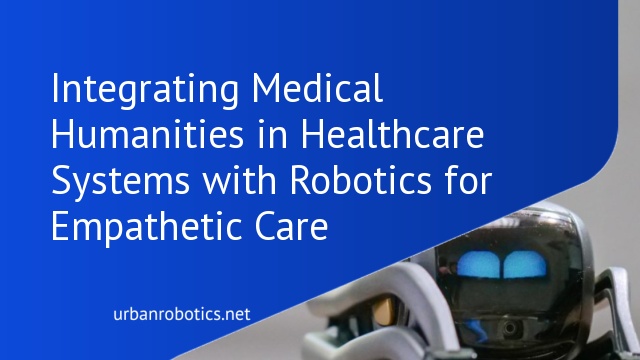Understanding Medical Humanities
Medical humanities encompass the interdisciplinary study of how humanities, social science, and the arts intersect with medical practice. They focus on understanding human experiences, cultures, and ethics in healthcare. By fostering these areas, we can train healthcare professionals to be more empathetic, ethical, and culturally aware.
Integrating subjects like literature, philosophy, history, and ethics into medical education, medical humanities help in nurturing well-rounded practitioners. For instance, studying literature can improve emotional intelligence by offering insights into patient experiences. Similarly, medical ethics classes enhance decision-making skills by addressing moral dilemmas.
Using case studies and patient narratives, medical humanities also reinforce the significance of humanism in medicine. They provide real-life contexts showing how compassion and empathy are as crucial as clinical skills. This approach ensures that patient care remains holistic and individualized, even in the presence of advanced robotic systems. By grounding technological advancements in medical humanities principles, we can create healthcare systems that value both innovation and human connection.
The Role of Robotics in Healthcare Systems
Robotics plays a crucial role in modern healthcare systems by enhancing precision, efficiency, and patient outcomes while maintaining a humanistic approach.
Types of Robotics in Healthcare
Healthcare robotics encompasses various types, including surgical robots, diagnostic robots, and rehabilitation robots. Surgical robots like the Da Vinci system provide precision in minimally invasive procedures. Diagnostic robots, such as those used in imaging and analysis, offer accurate and swift diagnostics. Rehabilitation robots assist patients in physical therapy, ensuring consistent and controlled movements during recovery.
Benefits and Challenges
Robotics offers numerous benefits, including increased precision, reduced recovery times, enhanced diagnostic accuracy, and improved patient outcomes. However, challenges exist, such as high costs, integration complexity, and the potential for reduced human interaction. Balancing technological advances with empathy and ethics, guided by medical humanities, is essential to address these challenges effectively.
Integration of Medical Humanities and Robotics
Integrating medical humanities with robotics enhances healthcare by emphasizing empathy, ethics, and patient-centered care alongside technological advancements.
Enhancing Patient Care
Medical humanities can enhance patient care by cultivating empathy and understanding in healthcare professionals. Robots, like surgical robots or diagnostic robots, deliver precision and efficiency in treatments. For instance, surgical robots enhance precision and reduce recovery times, improving patient outcomes. When practitioners understand patient narratives and cultural contexts, the integration of robotics in healthcare nurtures a balanced approach that promotes both human connections and technological excellence.
Ethical Considerations
Medical humanities encourage ethical decision-making in healthcare. As robotics become prevalent, ethical questions about patient privacy, consent, and the digital divide arise. Addressing these issues requires healthcare providers to integrate ethics education into their training. Respect for patient autonomy and protection of personal data must be paramount. By embedding ethical principles in robotics utilization, the healthcare system can ensure that innovations serve patients’ best interests and maintain trust in the medical community.
Case Studies and Examples
Exemplifying the integration of medical humanities and robotics in healthcare systems, the case studies below emphasize successes and lessons learned. These examples showcase the impact of combining humanistic approaches with advanced technology to improve patient care and outcomes.
Successful Implementations
At the Cleveland Clinic, a robotic surgery program incorporated narrative medicine to enhance patient experience. Surgeons participated in workshops focusing on empathy and communication, which led to higher patient satisfaction scores and reduced recovery times. Another success story is from Stanford Health Care, where diagnostic robots assisted in early-stage cancer detection. Patient interviews and ethics discussions were integral parts of the program, ensuring a holistic approach to care.
Lessons Learned
From the University of Toronto Health Network, we learned the importance of balancing technology with human touch. Initially, robotic assistance in elderly care led to resistance among patients who felt isolated. After integrating storytelling sessions, patient acceptance and emotional well-being improved. At Johns Hopkins Hospital, the implementation of AI-driven diagnostics highlighted the necessity of continuous ethics training. Addressing concerns about data privacy and informed consent, the hospital developed comprehensive guidelines to maintain trust and transparency.
Future Trends and Innovations
Future trends in medical humanities within healthcare systems include advanced human-robot interaction techniques. These methods aim to bridge the gap between technology and patient empathy. For instance, robotic systems can be programmed to recognize emotional cues from patients, ensuring a more personalized interaction.
Innovations also address integrating narrative medicine into robotic care. Machines equipped with AI can share patient histories interactively, facilitating a more comprehensive understanding of patient backgrounds. This integration supports not only technical accuracy but also emotional connection.
Trials are exploring the inclusion of virtual reality (VR) in robotic training. Medical trainees can use VR simulations to practice empathetic interactions while performing complex surgical procedures with robots. This dual focus on technical and emotional skills aims to create more well-rounded healthcare professionals.
Ethics in AI development highlights ongoing trends. As robots assume more responsibilities, ensuring decisions align with ethical standards becomes crucial. Integrating ethics modules into AI programming helps maintain patient trust and data integrity. These innovations promise significant strides in marrying technology with the essential human touch in healthcare.
Overall, evolving trends and innovations present a future where robotics and medical humanities are harmonious, ensuring comprehensive, empathetic patient care.
Conclusion
As we move forward with integrating medical humanities and robotics in healthcare, it’s clear that this combination enhances patient care by balancing technology with empathy and ethics. By focusing on narrative medicine and continuous ethics training, we can ensure that healthcare professionals remain compassionate and patient-centered. The future holds exciting advancements in human-robot interaction and VR training, promising a more holistic approach to medical education and practice. Emphasizing both technical and emotional skills will help create a healthcare system that truly understands and meets the needs of patients.





